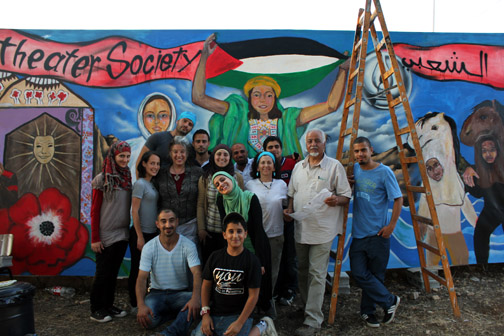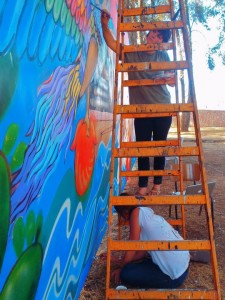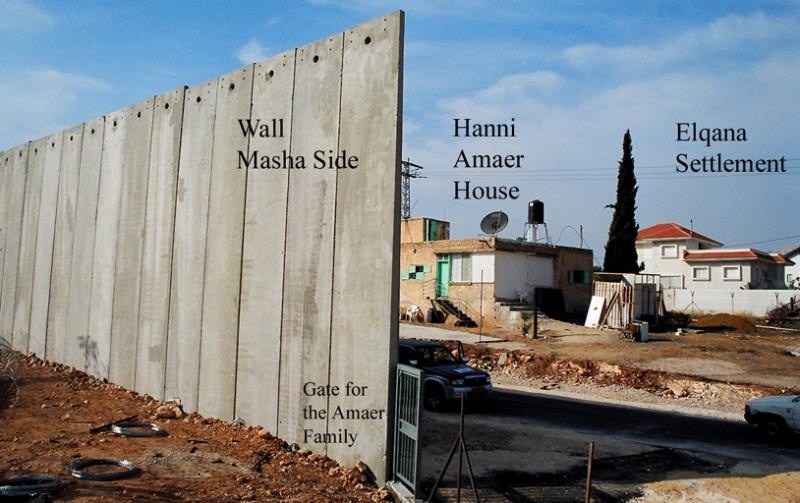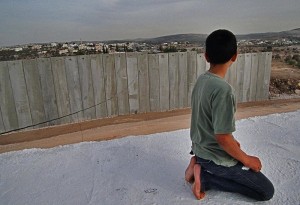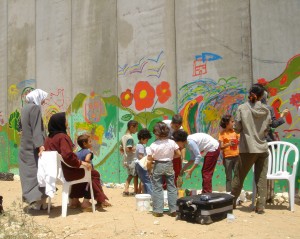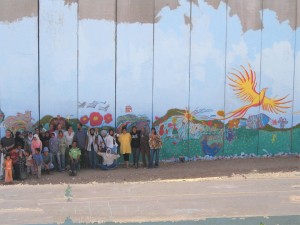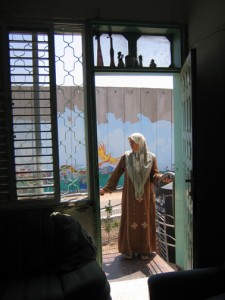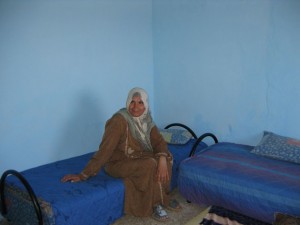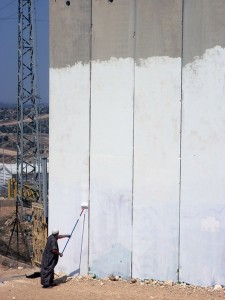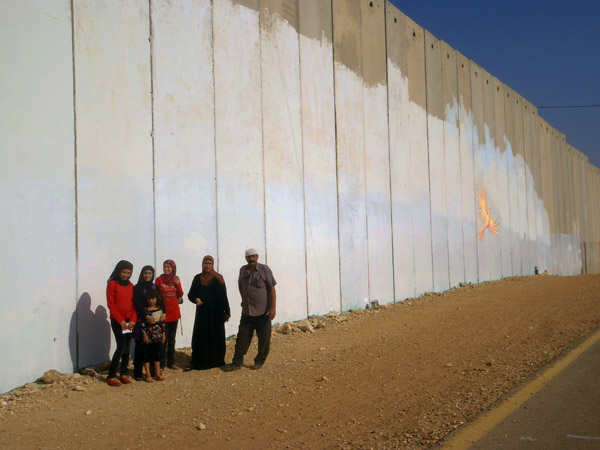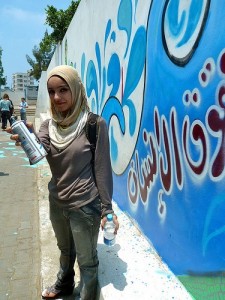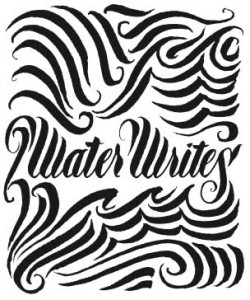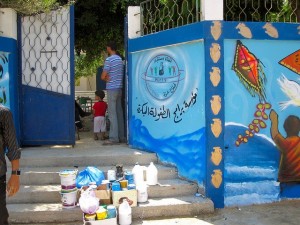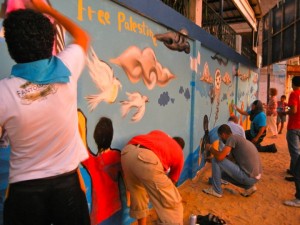Tuesday, July 5th
We begin the mural process for the Popular Theater. “We are from Palestine and you are from the United States, but we both speak the same human language – creativity.” says Fathi Ali, the director of The Popular Theater, after a long day of meeting,designing, transferring, painting. He is a well known and seasoned artist and activist – for over 45 years. He told us he was offered the Position of Minister of Culture, but didn’t want to be a bureaucrat. He has continued to dedicate himself to radical peoples’ theater. He is a warm, calm man, who is clearly a loved leader. For a month in the summer he runs a children’s theater camp. It’s a great atmosphere here.
After meeting with him and others in the theater company, and being given photographs etc., it was decided that the mural will have scenes from many previous productions, and will be up during the camp, and then be used as a backdrop for performances in the many villages and camps, where they do free performances to bring culture, laughs, consciousness, and respect to the people. We spend a day and a half with our entire Brigade beginning the mural. In spite of everything, this theater collective is one of the most creative and laughing groups I’ve ever met. serious and zany, continuously creating, improvising,meeting, being together, and easily including us. We will finish the theater camp mural soon,which has brought in a whole new circle of theater artists, and great kids,who have been wonderful, funny, and helpful. The pic is only some of them. Happy to give back to this raucous ,serious, loving group of actors.
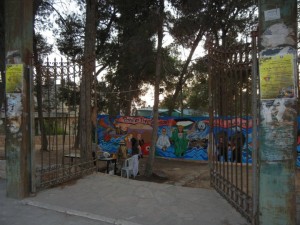 My anger builds at the racist/xenophobic stereotypes of Palestinians, when person after person after family are so warm, welcoming, unbelievably hospitable. And resiliant! Like Fathi Ali said, the Palestinians are thought of as either terrorists or victims, when what they are is simply human beings, who make mistakes, who laugh and cry, and who have a history and a culture, and will resist their oppression.
My anger builds at the racist/xenophobic stereotypes of Palestinians, when person after person after family are so warm, welcoming, unbelievably hospitable. And resiliant! Like Fathi Ali said, the Palestinians are thought of as either terrorists or victims, when what they are is simply human beings, who make mistakes, who laugh and cry, and who have a history and a culture, and will resist their oppression.
It has been lovely to paint at the camp, with much involvement. They actually made us a wall – welded big pieces of metal lathing to make a frame 9 feet by 40 feet, stretched it with canvas, and primed it, while we were designing and consulting with them about images. They will be able to deconstruct when the camp is done, and are going to use it for their next production.
Wednesday, July 6
 We paint on Theater Camp mural, with many kids and adults joining in. In the afternoon the
We paint on Theater Camp mural, with many kids and adults joining in. In the afternoon the 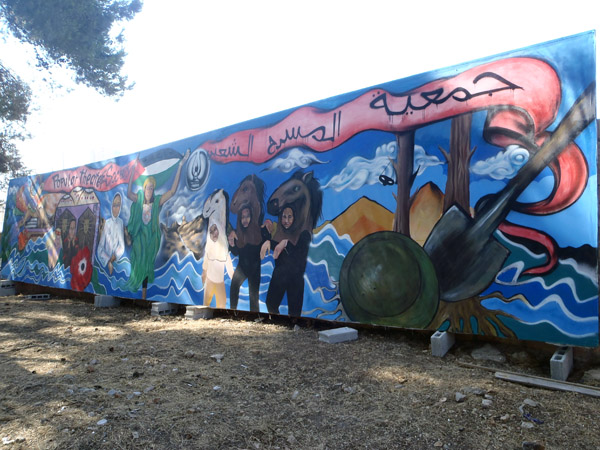 aerosol artists go to Silwan to paint.
aerosol artists go to Silwan to paint.
Thursday, July 7th
Susan and I stay to finish the mural at the theater camp in Ramallah, and the remaining 5 members will go to the Erez Gate and cross to Gaza to begin the murals there.